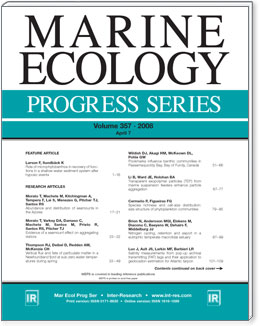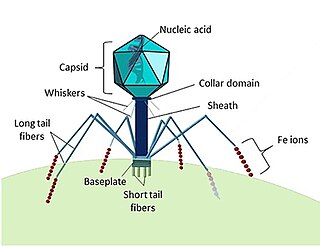
Plankton are the diverse collection of organisms found in water that are unable to propel themselves against a current. The individual organisms constituting plankton are called plankters. In the ocean, they provide a crucial source of food to many small and large aquatic organisms, such as bivalves, fish and whales.

Zooplankton are the animal component of the planktonic community. Plankton are aquatic organisms that are unable to swim effectively against currents. Consequently, they drift or are carried along by currents in the ocean, or by currents in seas, lakes or rivers.

Hydrobiology is the science of life and life processes in water. Much of modern hydrobiology can be viewed as a sub-discipline of ecology but the sphere of hydrobiology includes taxonomy, economic and industrial biology, morphology, and physiology. The one distinguishing aspect is that all fields relate to aquatic organisms. Most work is related to limnology and can be divided into lotic system ecology and lentic system ecology.

The microbial loop describes a trophic pathway where, in aquatic systems, dissolved organic carbon (DOC) is returned to higher trophic levels via its incorporation into bacterial biomass, and then coupled with the classic food chain formed by phytoplankton-zooplankton-nekton. In soil systems, the microbial loop refers to soil carbon. The term microbial loop was coined by Farooq Azam, Tom Fenchel et al. in 1983 to include the role played by bacteria in the carbon and nutrient cycles of the marine environment.

Ecology Letters is a monthly peer-reviewed scientific journal published by Wiley and the French National Centre for Scientific Research. Peter H. Thrall is the current editor-in-chief, taking over from Tim Coulson. The journal covers research on all aspects of ecology.

Austral Ecology: A Journal of Ecology in the Southern Hemisphere is a peer-reviewed scientific journal covering research related to the ecology of land, marine, and freshwater systems in the Southern Hemisphere. It is published by Wiley and is the official journal of the Ecological Society of Australia. The journal addresses the commonality between ecosystems in Australia and many parts of southern Africa, South America, New Zealand, and Oceania. For example, many species in the unique biotas of these regions share common Gondwana ancestors. The journal was established in 1976 as Australian Journal of Ecology, obtaining its current name in 2000. As of 2017, the editor-in-chief is Nigel Andrew.

The Journal of Medical Microbiology is a monthly peer-reviewed medical journal covering all aspects of microbiology relevant to human and animal disease, including pathogenicity, virulence, host response, epidemiology, microbial ecology, diagnostics, etc., relating to viruses, bacteria, fungi, and eukaryotic parasites. It is published by the Microbiology Society and the editors-in-chief are Norman Fry and Kalai Mathee. The journal publishes primary research articles, reviews, short communications, personal views, and editorials.

The Coastal and Estuarine Research Federation (CERF) is a private, nonprofit organization that was created in 1971. At that time, the members of two regionally based organizations, the Atlantic Estuarine Research Society (AERS) and the New England Estuarine Research Society (NEERS) recognized the need for a third estuarine organization that would address national estuarine and coastal issues. Today, CERF is a multidisciplinary federation of members and seven regionally based affiliate societies dedicated to the understanding and wise stewardship of estuaries and coasts worldwide.

Functional Ecology is a monthly peer-reviewed scientific journal covering physiological, behavioural, and evolutionary ecology, as well as ecosystems and community ecology, emphasizing an integrative approach.

The Marine Ecology Progress Series is a peer-reviewed scientific journal that covers all aspects of marine ecology.

Archiv für Molluskenkunde is a peer-reviewed scientific journal published by the Senckenberg Nature Research Society, covering research in malacology.

A microbiome is the community of microorganisms that can usually be found living together in any given habitat. It was defined more precisely in 1988 by Whipps et al. as "a characteristic microbial community occupying a reasonably well-defined habitat which has distinct physio-chemical properties. The term thus not only refers to the microorganisms involved but also encompasses their theatre of activity". In 2020, an international panel of experts published the outcome of their discussions on the definition of the microbiome. They proposed a definition of the microbiome based on a revival of the "compact, clear, and comprehensive description of the term" as originally provided by Whipps et al., but supplemented with two explanatory paragraphs. The first explanatory paragraph pronounces the dynamic character of the microbiome, and the second explanatory paragraph clearly separates the term microbiota from the term microbiome.

The viral shunt is a mechanism that prevents marine microbial particulate organic matter (POM) from migrating up trophic levels by recycling them into dissolved organic matter (DOM), which can be readily taken up by microorganisms. The DOM recycled by the viral shunt pathway is comparable to the amount generated by the other main sources of marine DOM.
William Li is a Canadian biological oceanographer who did research on marine picoplankton, marine macroecology, ocean surveys of plankton from measurements of flow cytometry, and detection of multi-annual ecological change in marine phytoplankton.

Compared to terrestrial environments, marine environments have biomass pyramids which are inverted at the base. In particular, the biomass of consumers is larger than the biomass of primary producers. This happens because the ocean's primary producers are tiny phytoplankton which grow and reproduce rapidly, so a small mass can have a fast rate of primary production. In contrast, many significant terrestrial primary producers, such as mature forests, grow and reproduce slowly, so a much larger mass is needed to achieve the same rate of primary production.

Marine viruses are defined by their habitat as viruses that are found in marine environments, that is, in the saltwater of seas or oceans or the brackish water of coastal estuaries. Viruses are small infectious agents that can only replicate inside the living cells of a host organism, because they need the replication machinery of the host to do so. They can infect all types of life forms, from animals and plants to microorganisms, including bacteria and archaea.
Lawrence Richards Pomeroy was a zoologist, ecologist, and oceanographer.

Restoration Ecology is a bimonthly peer-reviewed scientific journal covering research on restoration ecology. It was established in 1993 and is published by Wiley-Blackwell on behalf of the Society for Ecological Restoration. The editor-in-chief is Stephen Murphy.
Catalina Cuellar Gempeler is a Colombian microbial ecologist and marine microbiologist, currently teaching and doing research at Cal Poly Humboldt. Her research focuses mainly on understanding microbial meta-community, eco-evolutionary dynamics, and ecosystem dynamics. The Catalina Cuellar-Gempeler lab is currently focused on studying the interactions between hosts and their microbial communities. The lab's main emphasis is on the microbes used in digestion in the Californian and Eastern, carnivorous pitcher plants. In March 2021, Cuellar-Gempeler was awarded an Early Career grant for $1 million by the National Science Foundation.
Helle Ploug is marine scientist known for her work on particles in seawater. She is a professor at the University of Gothenburg, and was named a fellow of the Association for the Sciences of Limnology and Oceanography in 2017.

















